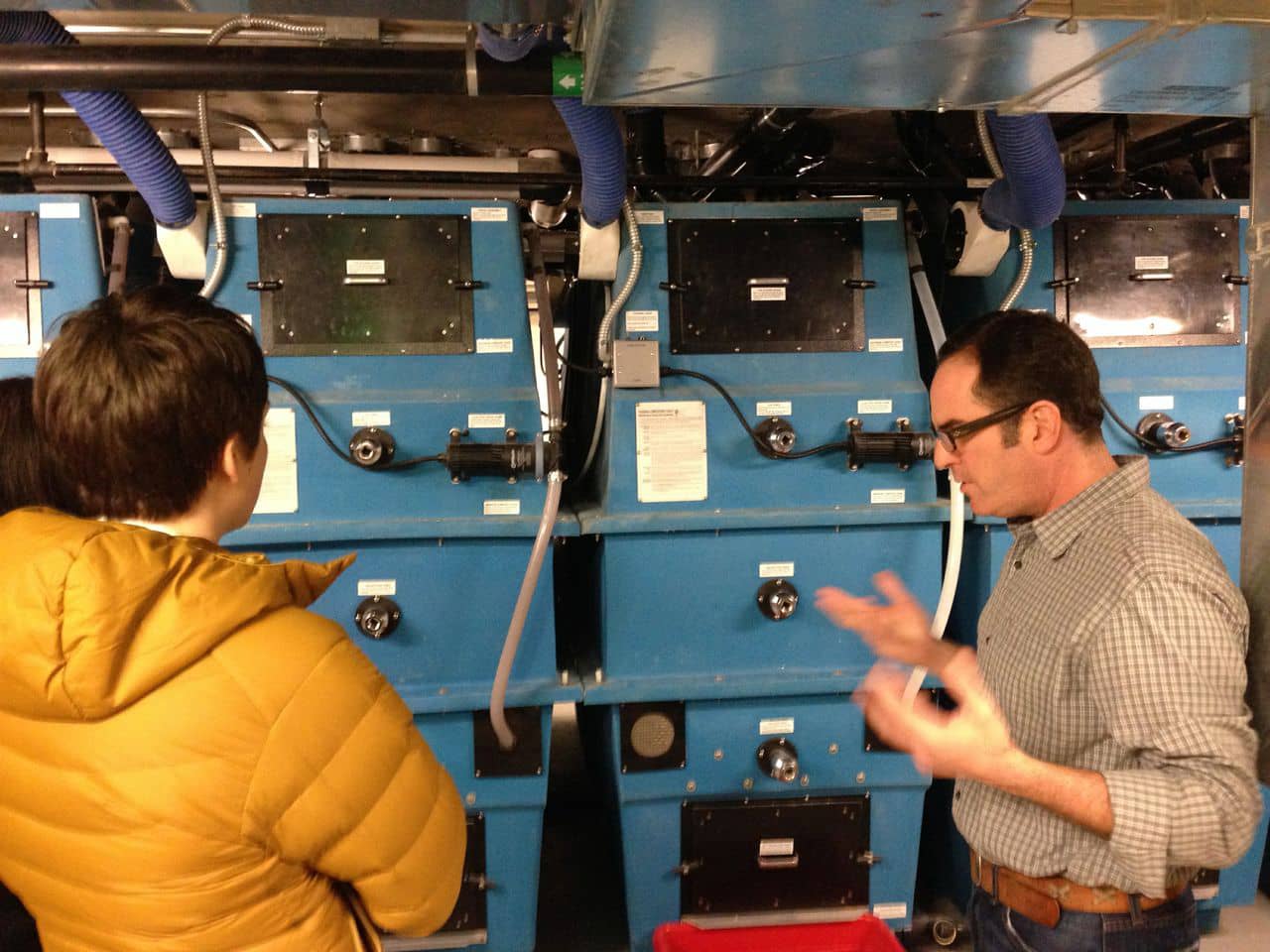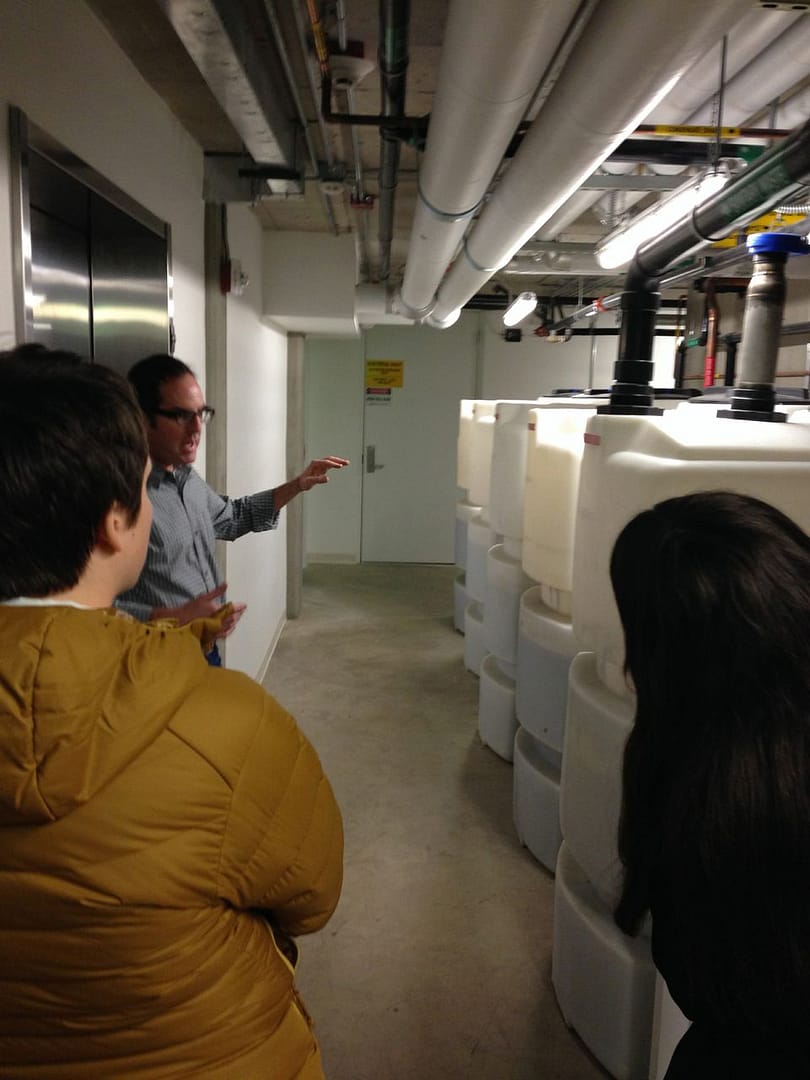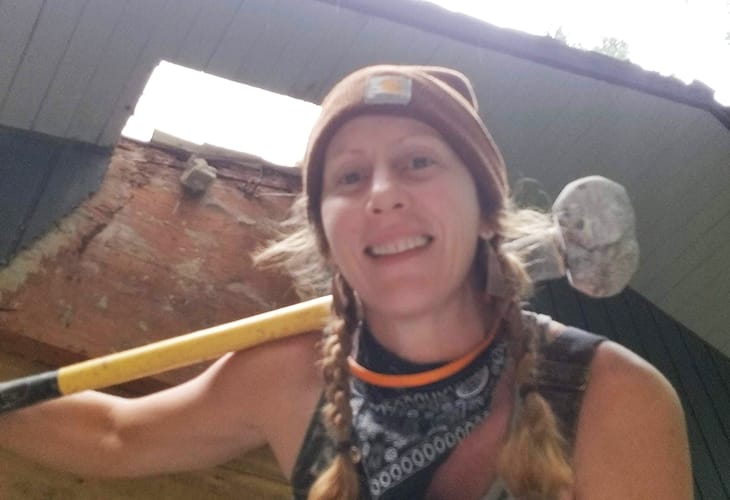H&H takes a look at the Bullitt Center’s composting toilets and waste management system.
(Editor’s Note: this is the third in a series of Bullitt Center tour posts by Hammer & Hand in Seattle. Please also see our introductory post about the Living Building, this post about its Discovery Commons educational space, this post about its energy systems, and this post about its water systems.)
When I tell people I work in a building with composting toilets, their eyes widen and they immediately ask, “What’s that like?”
I tell them it’s probably not at all what they’re imagining. The Bullitt Center is the only building in the world with a six-story composting toilet system, but you’d hardly notice. The restrooms are designed like most office restrooms: they have trash cans, except that one is marked “Compost” and the other “Landfill,” they have no-touch faucet sinks, and stalls for privacy (and urinals in the men’s restroom). They also have showers for people to use after commuting to work via bike.
The only big difference between Bullitt Center bathrooms and bathrooms found in other office buildings are the toilets.

Photo by Nic Lehoux, courtesy of the Bullitt Center.
Instead of gallons of water, these composting toilets use only two tablespoons of water mixed with biodegradable soap. This solution produces a foam that oozes from the top of the bowl downward for regular cleaning and to push everything down to the composters. All paper towels and toilet paper used in the Bullitt Center bathrooms are compostable, and similar to toilets on a septic system, no outside materials can be put down the toilets here.
These toilets are also psychic – sort of. They begin emitting the foam when they sense a user is present, which can be quite a surprise the first time you use one!
An unnoticeable suction keeps odors out of the bathroom while also drawing air into the composting system to provide the oxygen it needs to create successful compost. You’d be surprised to find that Bullitt Center bathrooms actually smell better than regular public bathrooms.
Waste is transferred via vertical pipes to one of the ten Phoenix Composting Systems in the basement of the building where it undergoes a long aerobic process of decomposition. It will take an estimated two years before the first load of compost leaves the Bullitt Center. Once the solid compost is ready to be collected, it will be picked up by Cedar Grove, Seattle’s municipal composting center in Carnation, WA.

Brad Kahn explains the functions of these Phoenix Composting Systems to fellow H&H employee Aubrey and me.
As matter decomposes, excess liquid is pumped from these composters into leachate storage tanks in an adjacent room. This stabilized leachate is vacuum-pumped and picked up monthly to be used as fertilizer over non-edible agriculture.
Brad explains the functions of these leachate tanks.
Another product created by this composting system is carbon dioxide. This gas rises up and out of the building through heat recovery ventilators at the roof.
For more information on the Bullitt Center’s composting toilet system, check out the Building Features section of the Bullitt Center’s website.





